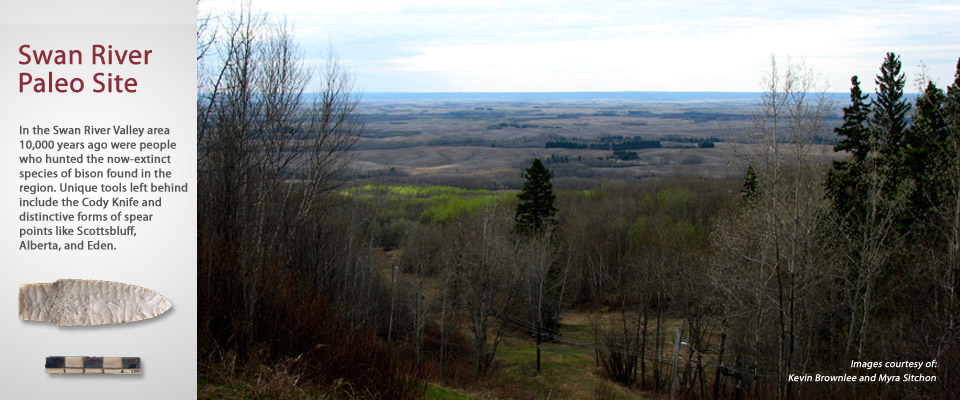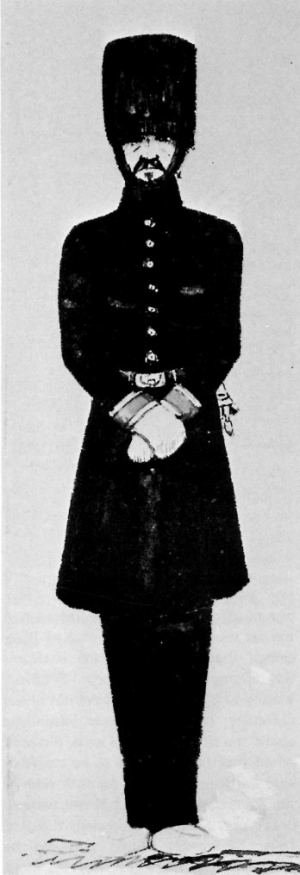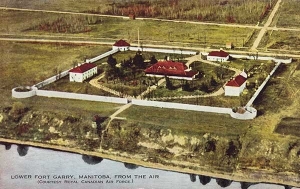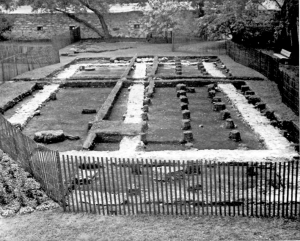The Military at Lower Fort Garry
Introduction
Lower Fort Garry was built in 1830 after a devastating flood destroyed the original Fort Garry in 1826. Lower Fort Garry stands today on the western bank of the Red River in central Winnipeg, approximately 30 km north of the Forks and the original Fort Garry location. The fort walls were built mostly with local limestone, while many of the inner buildings are of Red River Frame and Half-timbered construction. The fort acted as a supply depot for the surrounding Red River settlement and Cree, Anishinaabe, Métis, and European peoples. Trading essential manufactured goods to farmers and hunters for food resources allowed the fort to provide provisions for military campaigns north.
The Sixth Regiment
The military occupation of Lower Fort Garry began in 1846 with the arrival of the Sixth Regiment, also known as the Royal First Warwickshire Regiment. The regiment was originally sent to Fort Garry in an attempt to pre-emptively safeguard the Red River settlement from a suspected American attack. During this time, tensions between Britain and the United States were high due to the recently resolved Oregon boundary dispute. Under the command of Major John Folliott Crofton, the Sixth Regiment arrived at Lower Fort Garry in October, 1846. Ultimately, good relations were restored between the United States and Great Britain, and the presence of the troops became a nuisance to the “locals”. In order to curb minor disturbances, the troops were put to work completing constructions of the fort walls, and by 1848 the Sixth Regiment had fully left.
The Second Battalion
The next significant military occupation of Lower Fort Garry came in the late summer of 1870, prompted by the Red River Rebellion lead by Louis Riel which began the year prior. The Second Battalion, also known as the Quebec Rifles, was the specific military force present in Lower Fort Garry during this period. They were sent west to deal with the rebellion alongside the First Battalion “Ontario Rifles”, a contingency of Canadian militiamen, and 373 soldiers of the British Sixtieth Rifles (accompanied by various supporting detachments). The Second Battalion was made up of mostly Canadian born English and French soldiers, with a number of Irish and Scottish soldiers as well. By the time the government forces arrived at Lower Fort Garry, the rebels had fled the area and it was taken without a fight. On August 3rd, 1871, Treaty 1 was signed by the Canadian government and seven chiefs of the Ojibway and Swampy Cree at Lower Fort Garry.
From 1871-1883, the fort hosted training of the North-West Mounted Police, and in 1884, the fort was once again turned over to the Canadian Militia.
Archaeological Excavations of Military Buildings
The University of Manitoba excavated Lower Fort Garry in 1965, 1966, and 1967. Throughout the excavations, several locations throughout the fort heavily influenced by the presence of military forces were excavated. Not much relating to the Sixth Regiment was excavated; however, locations such as the storehouse-barracks and the troop canteen would have been heavily used at the time of the Second Battalion’s occupation of the fort.
The storehouse-barracks was found to have a 32 foot by 72 foot foundation bisected by a central footing running the length of the building. By calculating what proportion of the 1,213 nails found in the storehouse-barracks were wire, cut, or wrought, it was determined that the nail count was consistent with what was to be expected for a building put up in the late 1860s and taken down in 1881.
The troop canteen was possibly built in 1870 for the Canadian government and remained until it was sold and moved in 1877. Excavations of the canteen revealed the remnants of the large structure’s walls, measuring 15 feet wide, 60.3 feet long on the west wall, and over 80 feet long on the east wall. Many miscellaneous artefacts were recovered from the building, including bottles, smoking pipes, and ceramics.
If the canteen really was built at nearly the same time as the storehouse-barracks as was thought, archaeologists expected to find some structural similarities between the two buildings. This came to be the case; by using the same nail counting method as was previously utilized, archaeologists found that the proportions of nail types between the two structures were extremely similar. This suggests that both the storehouse-barracks and the canteen were built and utilized by the Second Battalion at a similar time (1870s).
Conclusion
After subsequently becoming a penitentiary, a mental hospital, an HBC residence, and a motor country club, the fort was turned over to the federal government in 1951. It was designated a National Historic Site in 1958, and is still open to visitors today.
Figure Captions
Figure 1. Winter dress at Fort Garry, sketched by George Finlay. Country mittens and moccasins complement the uniform (Glenbow Foundation).
Figure 2. Colourized photo of the layout of Lower Fort Garry taken from the air.
Figure 3. Photo of storehouse-barracks post-excavation
Sources
Chism, James V.
1972 Excavations at Lower Fort Garry, 1965-1967; A General Description of Excavations and Preliminary Discussions. Occasional Papers in Archaeology and History, no. 5.
Goldsborough, Gordon
2020 Historic Sites of Manitoba: Lower Fort Garry. Electronic document, http://www.mhs.mb.ca/docs/sites/lowerfortgarry.shtml
Morrison, William R.
1975 The Second Battalion, Quebec Rifles, at Lower Fort Garry. Canadian Historic Sites: Occasional Papers in Archaeology and History No. 4
1975 The Sixth Regiment of Foot at Lower Fort Garry. Canadian Historic Sites: Occasional Papers in Archaeology and History No. 4
Parks Canada
N.D. Lower Fort Garry National Historic Site of Canada. Canada’s Historic Places. Accessed online 20 Jan 2022 https://www.historicplaces.ca/en/rep-reg/place-lieu.aspx?id=4224&pid=0







